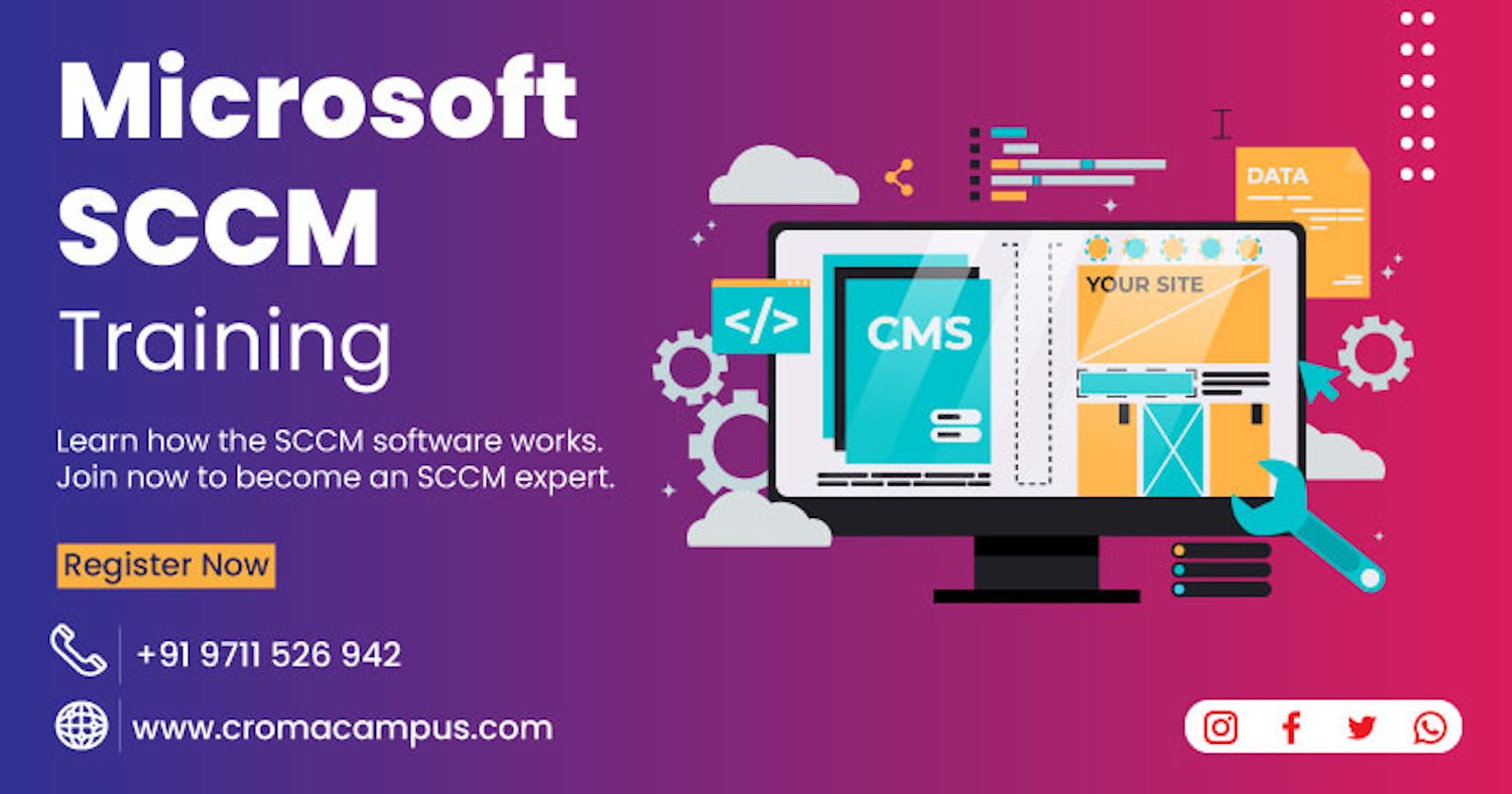What is Microsoft SCCM?
A Microsoft Windows tool called System Centre Configuration Manager, commonly referred to as SCCM.
Introduction:
A solution devised for endpoint management in Microsoft devices is System Center Configuration Manager (SCCM). A Microsoft Windows tool called System Centre Configuration Manager, commonly referred to as SCCM, makes it simpler to deploy, manage, and secure programs and devices within an organization. Previously a component of Microsoft Systems Centre, SCCM is now a part of Endpoint Manager. SCCM combines physical and virtual machines using a common architecture. Additionally, it offers resources to help IT managers with access control. To get better light on its capabilities and features, go through a Microsoft SCCM Online Training. It will help you cover all the necessary skills and learn all its functions.
Understanding the structure of SCCM:
System Center Configuration Manager or SCCM depends on a single infrastructure to integrate physical and virtual machines. It additionally offers tools to help IT administrators in areas of access control.
In order to get this, it identifies linked desktops, servers, and mobile devices to a network by Microsoft Active Directory (AD) and installs the necessary apps on each client. It further updates and orchestrates applications and deployments for single users or groups.
Microsoft’s SCCM usually acts as a system manager for enabling supervisors to manage the security and deployment of applications and devices by the company.
SCCM at times is mistaken for Microsoft System Center Operations Manager (SCOM). Where SCOM is a platform in use to monitor systems’ overall health and performance. The basic difference between SCOM and SCCM is SCCM is in use for the management of configurations, whereas SCO is used for monitoring applications and services. Working with SCCM, one could easily distribute updates to devices working on Windows 10 or Windows 11 that are compatible throughout your complete network. It further provides an efficient means of provisioning and also updates many devices all at once.
SCCM simplifies how you look after Microsoft apps like Microsoft Forefront, Windows Phone applications, Application Virtualization (App-V), etc. Hence, controlling all from one location.
Important SCCM architectural components:
There are four components in the SCCM architecture. Let’s understand each of them clearly;
Central administration site: The central administration is typically at the top of the hierarchy in every sizable organization. This is where primary locations are administered or under control. Only organizations with a hierarchy of more than 100,000 clients employ CASs, which can manage more than 25 principal sites simultaneously. It's important to keep in mind that the CAS is only utilized for administrative and reporting needs.
Primary site: This is supposedly the next level on the hierarchy, supporting the secondary sites below. Usually, these sites do not ideally support themselves. One basic site can support up to 250 secondary sites and additional 100,000 clients.
Secondary sites: These sites come at the next level of the hierarchy steps, and the primary sites look for them. These sites generally have their own SQL servers and typically work as intermediaries between users and the primary sites.
Distribution point: The systems of the client receive content from distribution sites. There are two categories of distribution points: local and remote. Particularly, distribution points are primary and secondary sites by default.
Top SCCM features:
Application management
Administrators may create, manage, and deploy applications for every device managed by an organization thanks to this functionality. This capability enables the Configuration Manager to do management tasks like assigning particular devices to particular users and deploying software to the user and the device. This implies that every user would have access to every necessary piece of software to efficiently complete their work.
Endpoint protection
Allows your user’s security updates at different time intervals by email notifications
Allow access to Microsoft Defender Advanced Threat Protection.
Further, get access to the most recent antimalware definition files
Reporting
With this function, you may design unique reports right from the console. Information on users, software, hardware, and upgrades is generated as a result of this. To run the report in the SCCM console, one must do a few actions. The user must first choose to monitor in the Configuration Manager console. The reporting in the monitoring workspace can be expanded by clicking. Clicking on Reports in the expanded pane will show all the reports that are accessible. Select the report, then click Run to open it or Edit to make changes on the main tab.
Conclusion:
SCCM even allows users and administrators to better manage and further deliver updates for devices useful in an organization. Looking at more of its feature, it is beneficial to get professional training to make a solid base. Also, the SCCM Course Fees are minimal and easy to bear for everyone. Hence, if you look to enhance your expertise in this module, definitely go for this training.

